Bear guys and wolf guys
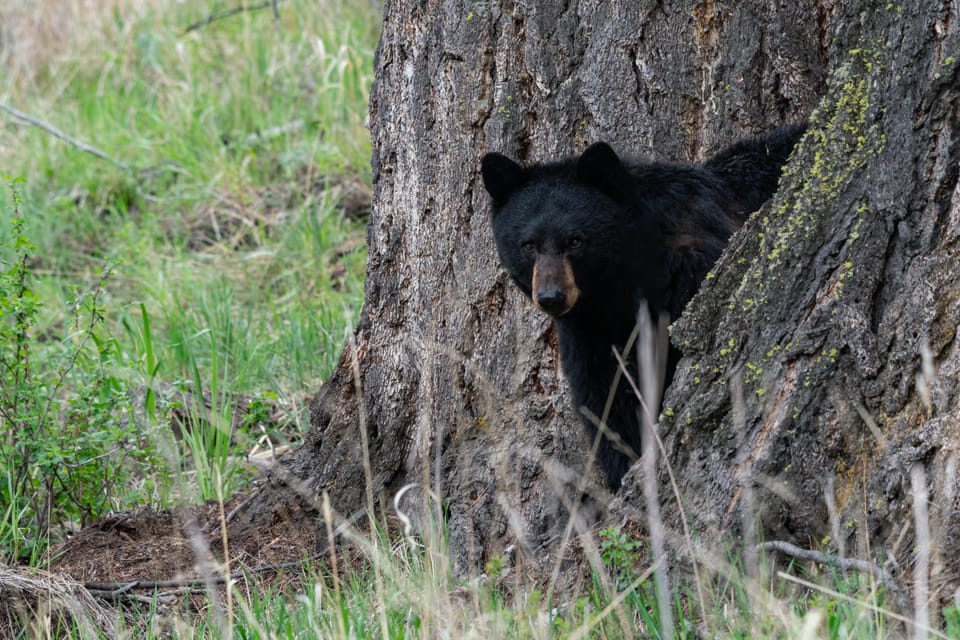
Things I thought about on the first half of a solo road trip...
I leave Portland on a Monday in late September with a plan to stop one night in Spokane on the way out to Glacier National Park. I’ve never been and the late summer season offers a perfect sliver of time to slip out to somewhere really popular without the crowds. My trip is very last minute. I plan to car camp in the front country, hit the highlights and absorb the immaculate early fall vibes, crisp morning air and leaves such a saturated yellow the light can barely pierce them.
The world feels bad and surreal and like everything is spiraling out of control because it is, so these are good times to decamp to nature haha definitely not permanently. The falcon cannot hear the falconer indeed; for one of the most famous poems of all time, "The Second Coming" really goes hard in 2025.
I pack a very normal selection of front seat essentials that includes a pile of almost ripe tomatoes from my favorite farmer’s market tomato guy, three perfect raspberry macarons (Evie is baking through it), and the bear spray I bought last year in the Tetons. I keep the bear spray in the passenger seat and religiously take it out any time I leave the car for an extended period of time after hearing a bunch of horror stories last year about people leaving canisters of bear spray (aerosol capsaicin i.e. breathable chili pepper) in hot cars and returning to a hole in the windshield and spicy, spicy interior. I don’t know how often this actually happens but it isn’t going to happen to ME.
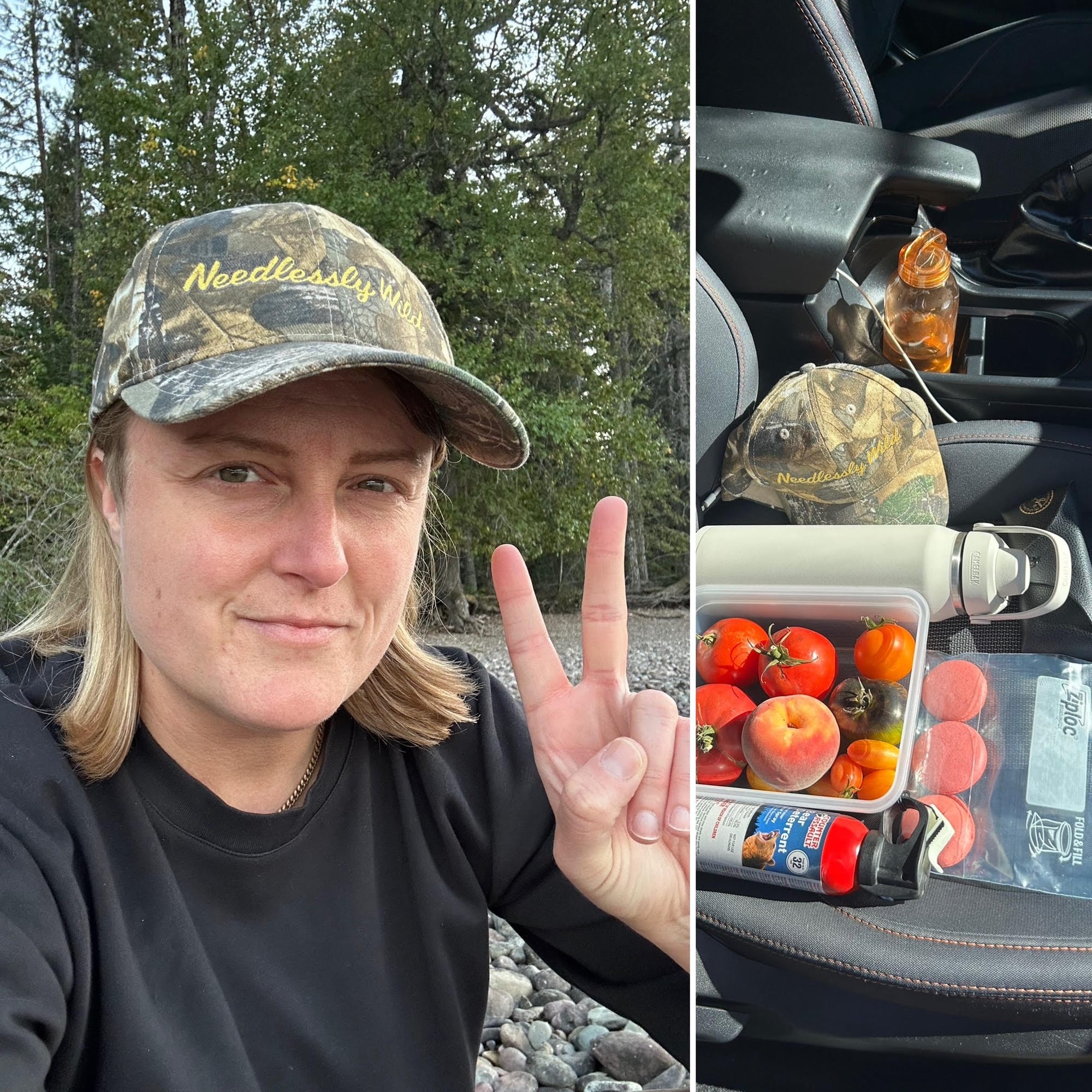
It’s probably dumb to be a little nervous about hiking solo in grizzly bear country in a world full of so many existential threats, more every day really. We don't have grizzlies in Oregon or any accessible parts of Washington and I had never seen one until last year. Last spring after quitting my job, I signed up for a field course on wildlife photography in Yellowstone on a lark. I thought I'd be lucky to see one big brown bear, but I wound up seeing a ton of them. Grizzly bears were everywhere I went; grizzlies in the brush at dusk, on the distant hillside, grizzly yearlings tumbling through fields, grizzlies on the trail ahead. Black bears were everywhere too, especially near areas with trash and human activity, but they're generally more like large rarely deadly raccoons you don’t want to surprise.
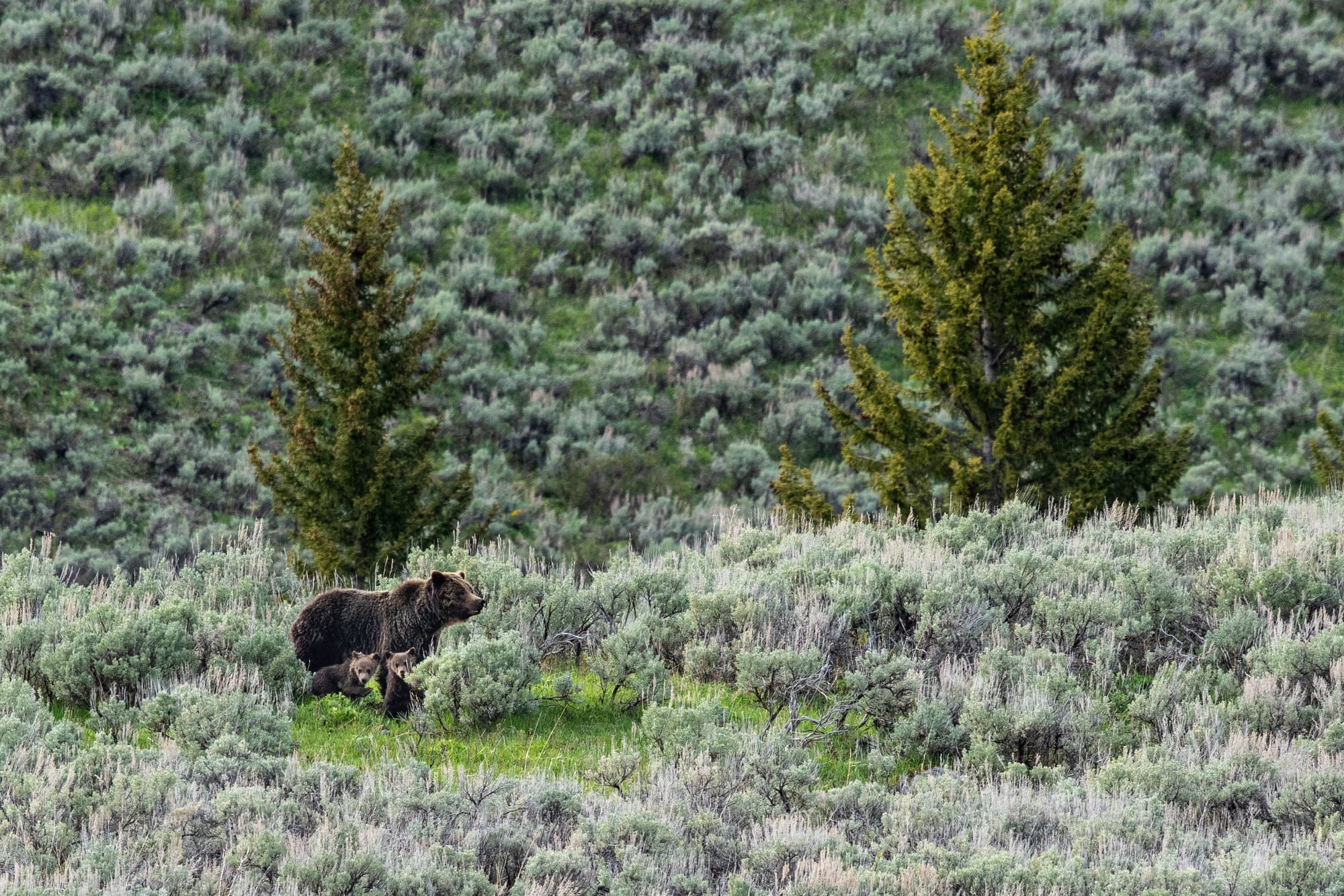
My field course was through Yellowstone Forever, an educational org based out of Yellowstone’s historic Lamar Buffalo Ranch, which still has bison-height corrals from when they ranched bison like cattle to restore them to the ecosystem, which is wild to think about now. There’s a lot to say about the things I learned on that trip but the foremost might be that a) always use a tripod especially when you don't want to (I don't do this) and b) everyone in this world fits into two categories: bear guys and wolf guys.
In Yellowstone, there are droves of devoted old mostly men who live I guess close enough to come into the park and constantly monitor the activities of the animals. The men are divided into two camps: the bear people and the wolf people. If the rangers and park volunteers need extra info about something going on with the bears, they ask the bear guys. If you need to know what the wolves are up to that afternoon, go track down the wolf guys.
The bear guys were a generally chatty and pretty varied cross section of the broader outdoorsman community. The wolf guys were more elusive, grizzled and wild eyed. Wolves are actually sweet little families with complex social structures, but I still liked that the bear guy vibes vs. the wolf guy vibes at least kind of reflected the behavior of the animals their lives revolved around.
Both camps conducted citizen science for hours every day. The data the wolf and bear guys collected, like 907F, the alpha female of the Junction Butte wolves, was feeding on the bison carcass by the creek this morning trickled out through the massive park via word of mouth and bubbled up everywhere you went. In the week I spent watching the sun set beyond the bison pens, hearing what the animals were up to every night from the researchers and rangers and volunteers and bear guys and wolf guys buzzing around Lamar Ranch made about a million times more sense than any social network I've ever used.
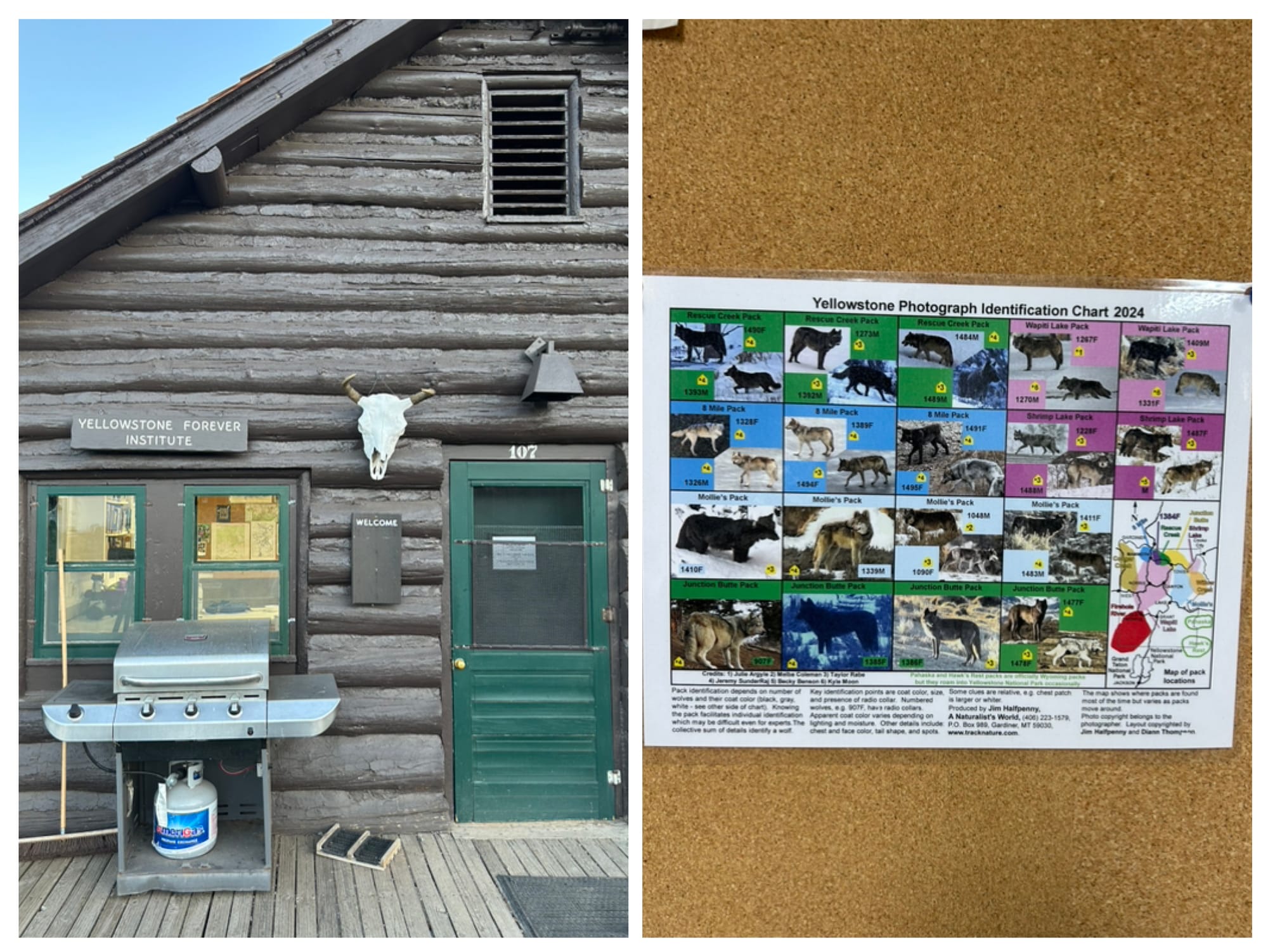
Sadly, 907F, the oldest wolf in Yellowstone, actually died earlier this year after sustaining injuries from a rival wolf pack. Keeping up with the wolf packs is basically a wildlife reality show… while I was there the big gossip was that an unknown interloper stole a pup from the Junction Butte den, which is only a mile from the road and the easiest to observe of the wolf packs in Yellowstone. And TIL that Yellowstone wolf drama is so complex that it actually inspired an educational game with its own active and dedicated longtime subreddit, which leads to incredible wolf roleplaying moments like this, apparently.
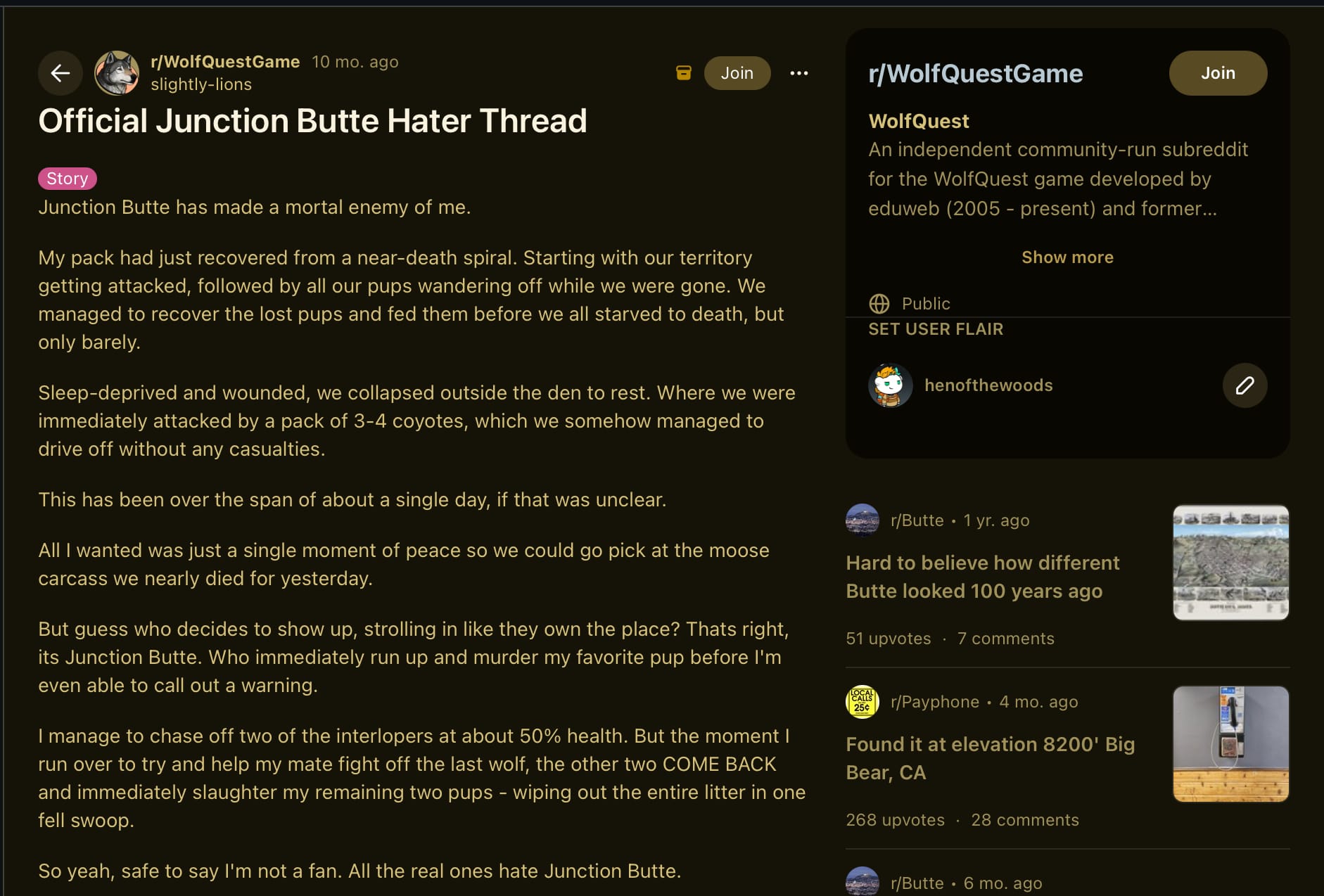
"Live the life of a wild wolf in a realistic ecological simulation set in Yellowstone National Park."
In non-digital Yellowstone, my wildlife photography field course was led by a self-proclaimed bear guy named Meg, a tiny, no-nonsense retired judge who had been shooting wildlife for 25+ years out of Cody, had pictures published in Nat Geo, and could lug camera gear approximately 4x her body weight so quickly when she spotted an animal that you’d think she teleported. Some days our wildlife watching group voted: Bears or wolves... which big carnivore would we spend our time searching for? As we mostly scanned the sage hills and dense woods for bears, I learned that I was a wolf guy at heart (but I like bears too).
Late in my week in the Lamar Valley, a couple wolf guys at a pullout let me look through their expensive scopes to spot my first wolf, which was patiently described to me as a “rolled up carpet” between two trees, well over a mile away – a very normal wolf viewing distance. Black bears are constantly crashing in on humans along campsites and roadways. Grizzlies, the undisputed apex predator, are living their lives mostly oblivious to humans and everyone else. Wolves are ghosts on the ridgeline, a smear of grey and brown in the sage and then gone. And that’s what the wolf guys live for. Lynx are even more elusive but I don't think there are any lynx guys because no one, even the best spotter in our group – a wildlife biologist working for the park – ever sees one.
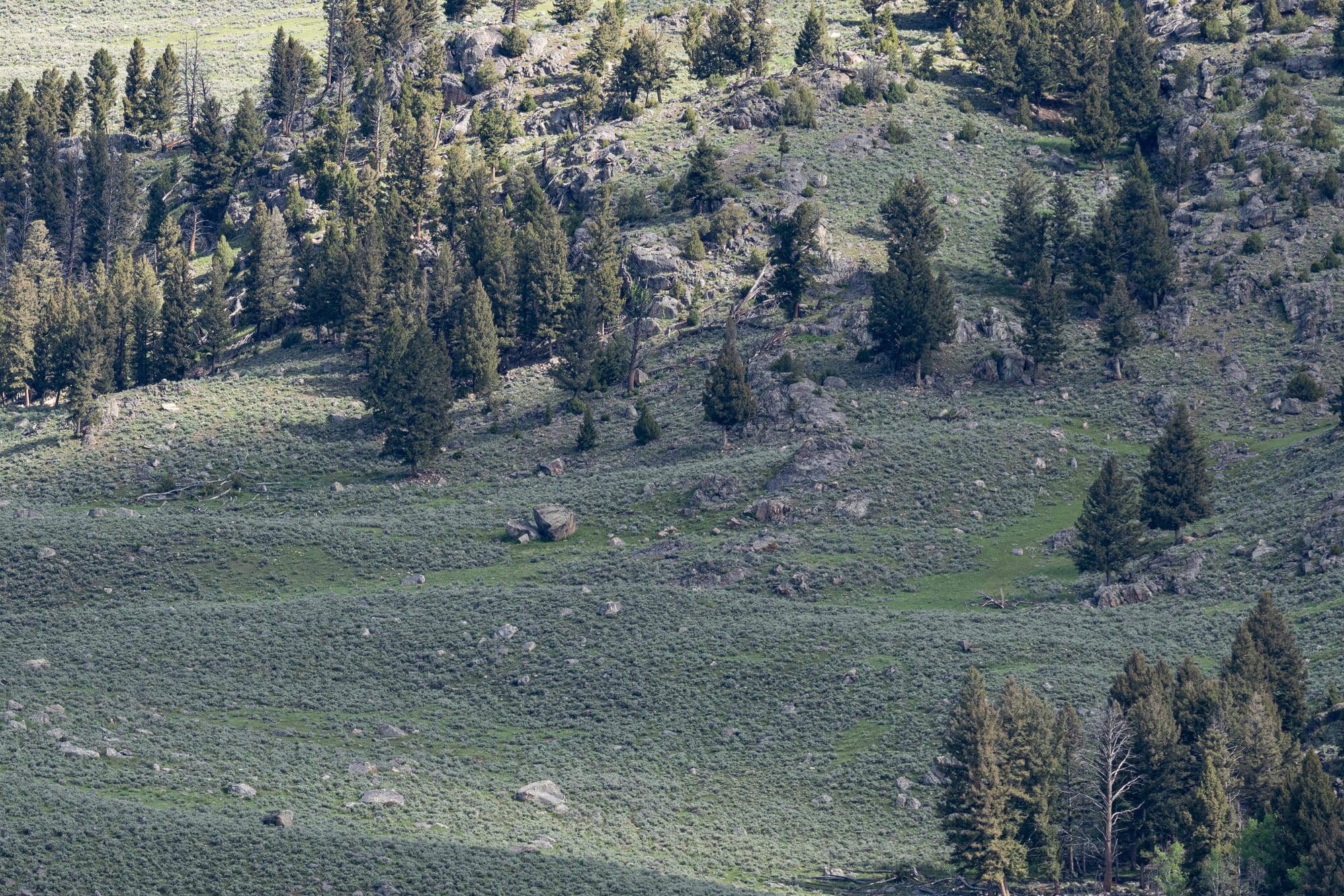
In other bear news, NPS and Fish and Wildlife have a joint plan to reintroduce grizzly bears to Washington’s North Cascades, so maybe the Pacific Northwest will get cozier with brown bears eventually. But with everything going on in the federal government is there really anyone left to like, drive the grizzly bus? Apparently it is a truck/trailer, which is like a bus, and they also use helicopters like they do with mountain goats. We don’t even have workers to do like, normal aviation right now, so I have to assume the grizzlycopter plan has been shelved indefinitely in lieu of priorities like tearing down signs about climate change, erasing evidence of the slave trade and scrubbing tribal histories from the parks. (Later in the week, I’ll take photos of any signs I see documenting Glacier’s disappearing glaciers that haven’t been removed yet.)
Most people experience national parks like Yellowstone and Glacier as handful of roads with scenic pullouts. The lone road dramatically winding through a natural landscape reinforces the illusion that the parks cordon off areas of untouched wilderness. In reality, the parks are almost universally rich swaths of land that the U.S. expropriated from the tribes that had previously hunted, fished and traded within their boundaries for thousands of years. Like everything else in this country, America’s most beautiful places are steeped in a brutal history of racism, violence and extraction:
America’s best idea, as Wallace Stegner coined it, contained other hidden and sometimes sinister implications. Many of the “crown jewel” national parks predate the 1916 creation of the National Park Service (NPS). In 1910, half of the Blackfeet Reservation was lopped off to help create Glacier National Park, as historian Mark David Spence documented in Dispossessing the Wilderness: Indian Removal and the Making of the National Parks (2000)…
After the creation of the NPS, a concerted campaign began to erase Native people from the history of the parks. The government had their reasons for this. Mostly the NPS saw Native people and their claims to the national parks as nuisances or as spoiling the Anglo-American views of “pristine” wilderness. I use pristine in a tongue-in-cheek manner, since at that time the government also hired landscape architects to shape the parks and scores of hunters to cull herds of bison and elk and annihilate predator species such as wolves. Of course, early park boosters also built grand lodges, railroad terminals, and roadways, but these were for the “right sort” of visitors—namely wealthy, influential, and largely urbane Americans. Native American residents spoiled the view.
There's a lot of good reading about this, some I've done and some I've meant to. One book, Dispossessing the Wilderness: Indian Removal and the Making of the National Parks keeps coming up so I put that on my high priority reading list. I learned a lot in The Heartbeat of Wounded Knee: Native America from 1890 to the Present by David Treuer, a brilliant writer. It wasn't specifically about the parks, though he has called for the parks to be returned to the tribes elsewhere.
I turn the complexity of enjoying such beautiful places with such violent histories over and over in my head during the drive. It’s more than 10 hours to the west side of Glacier NP and while I can drive 10 hours in a day I don’t because its miserable and opt to split my drive in two.
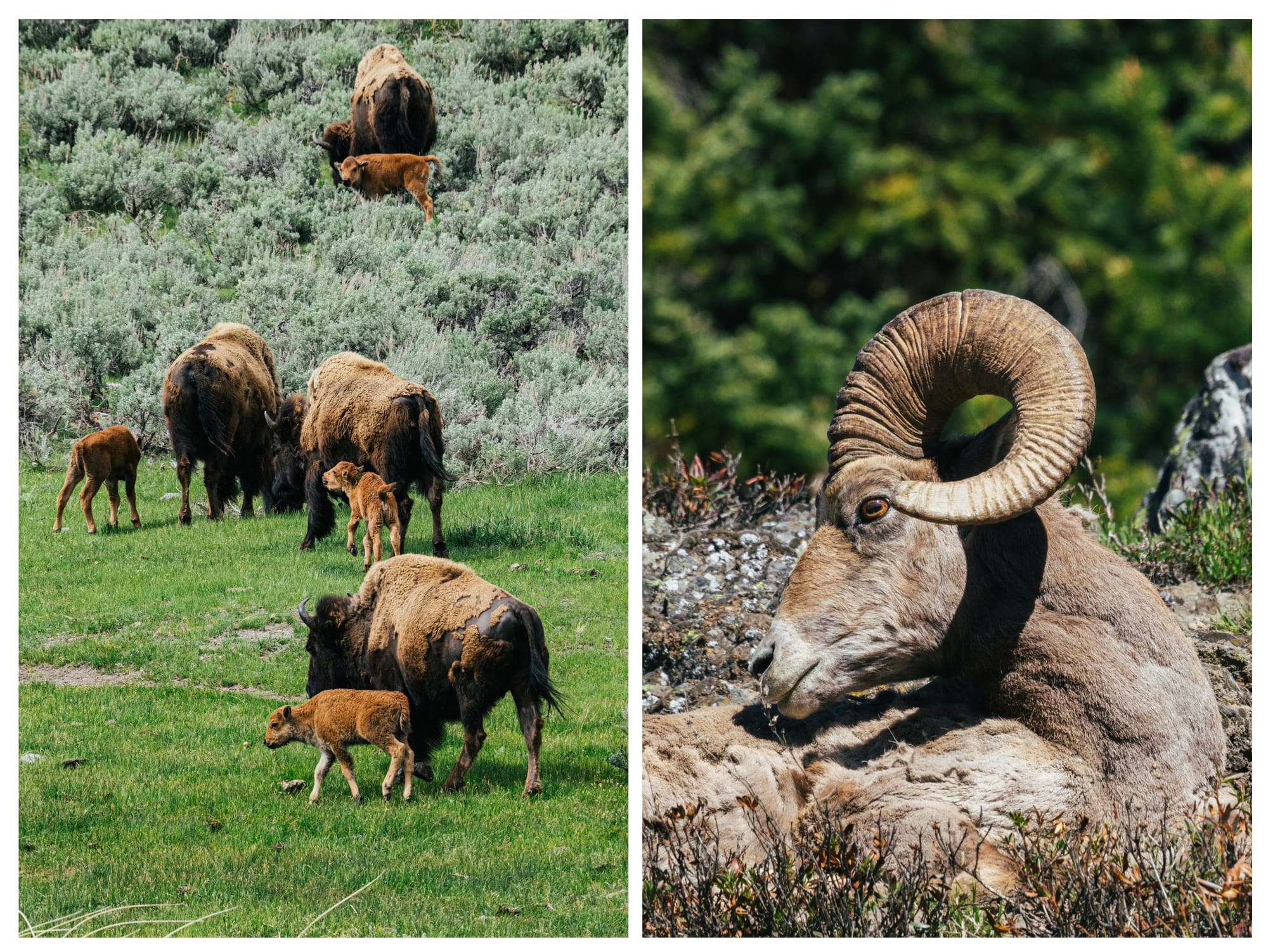
In lieu of an audiobook on a useful topic because my reading habits are in a truly atrocious place at this exact moment, I listen to a podcast about building decks for the game Magic the Gathering, which I play with friends weekly-ish now. It’s a usefully tactile way to be offline for many hours at a time, expressing yourself through your little cards and clever strategies. Games are a useful balm for hard times, or that’s what I tell myself when I’m all-in on escapist hobbies because doing much of anything while waist deep in the quicksand of rising fascism is overwhelming by design.
The stretch between Portland and Montana is so mind-numbing that I don’t really notice a massive dirty purple cloud on the horizon as I head out of the Dalles, east along the Columbia River Gorge. By the time I’m driving through it, it doesn’t look like anything, but a few hours later my eyes are burning and tears are literally running down my face. Weirdly, my lungs are fine and I’m not coughing or anything but by the time I roll into Spokane after dark my eyes are killing me so much that I can't drive so I order eyedrops and flonase for delivery, which feels intensely goofy but the man who drops them off is very sympathetic about fire season.
I check an air quality app and sure enough, I drove for hours through a purple area, a massive, dense cloud of smoke that shifting winds pushed into the gorge from Washington's cascades. When I left Portland, the air was totally clear. By the time I made it to Spokane, the smoke wasn't there yet either and it was just one more little glimpse at how the climate catastrophe will have uneven effects, some devastating for health, property etc. and a county over maybe none at all, not til next season.
Even when you’re trying to run away from the America of it all, you can’t. Later in the week, sitting quietly for hours while watching a glacier melt in the warm fall sun, everything feels beautiful and terrible, light and heavy all at once.
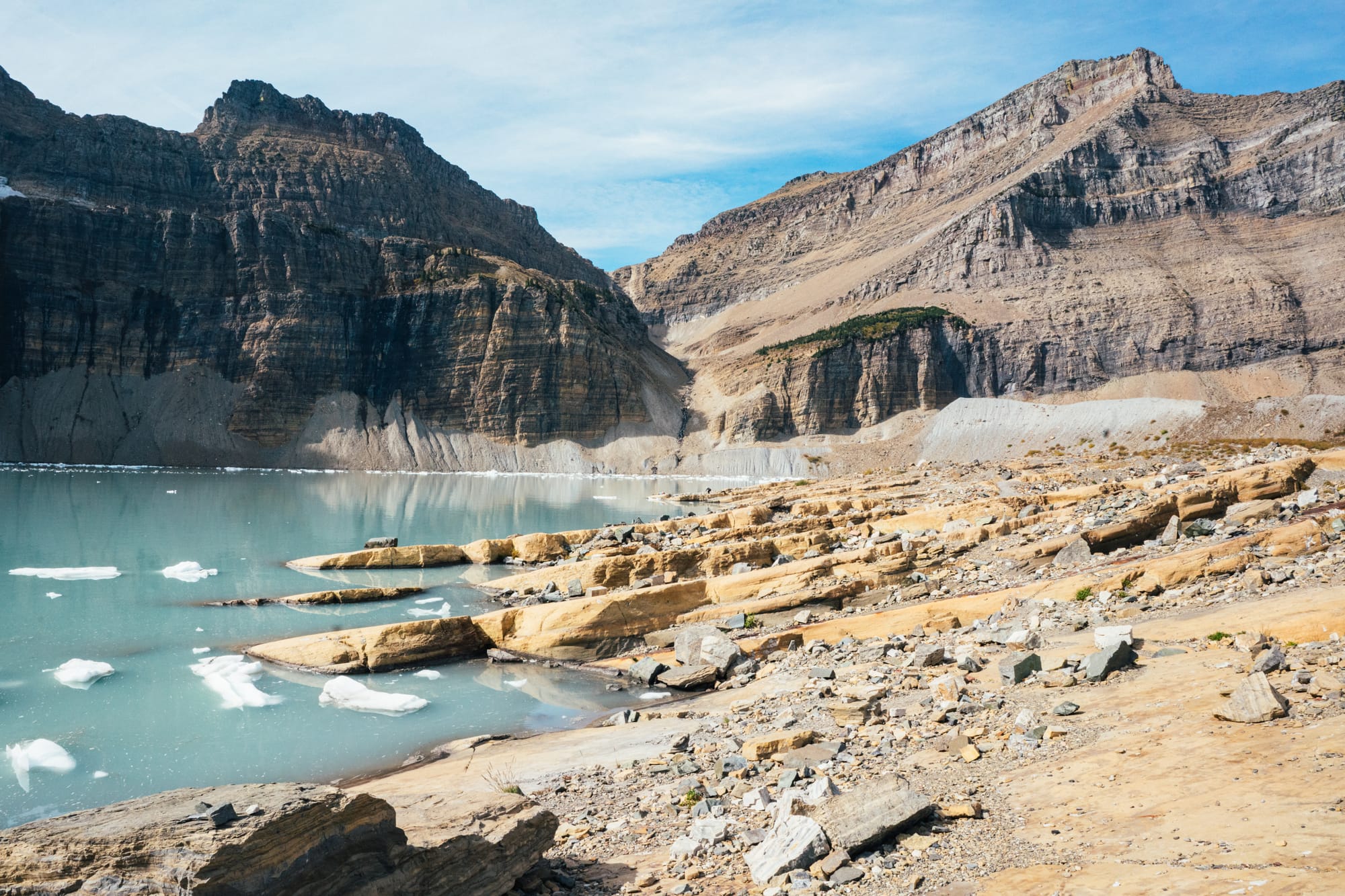
Member discussion